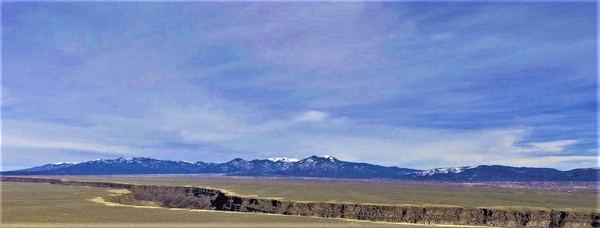

An almost countless number of art galleries line many streets of Taos, New Mexico. Reminders of its past as a Spanish Colonial outpost and frontier settlement are everywhere.
Trendy shops attract the attention, and dollars, of discriminating buyers. The brooding remnants of pueblos offer evidence of the strong lasting influence of Native American culture.
The tiny town of Taos would be worth a visit for its setting alone. It’s surrounded by high-country plains interrupted by pine forests and set off by distant towering peaks. The Rio Grande River cuts a jagged gash through the surrounding desert- like terrain, as it flows through the region.
While the population of Taos is only about 6,000, it makes up in appeal and attractions what it lacks in size. Let’s pick up the story in 1540, when a Spanish expedition arrived in the area to find magnificent pueblo structures in which the Tiwa (pronounced TEE-wah) Indians lived.
An initial period of co-existence between the two groups later gave way to decades of conflict, then a land grant to Spanish families led to establishment of the town that would become Taos.
The Spanish founded Taos around 1615. Its heart was a fortified walled square enclosed by adobe buildings – an architectural theme that is repeated time and again throughout the community.
Today that Plaza, like the rest of Taos, reveals the lasting influences of Native American, Spanish and Anglo-American cultures and traditions that have blended into a rich tapestry. Other colorful, sometimes divergent, threads were added first by fur traders and mountain men, later by artists and most recently by some drawn to alternative lifestyles, variously described as free spirits and counter-culturalists.
Architecture Mimics Nature in Taos, New Mexico
If you prefer modern structures sheathed in glass, you won’t find them here. Instead, the man-made scene is soft, and the ochre color of the Pueblo-style architecture – as it’s called — blends naturally with that of the surrounding desert.
In fact, that style of construction is made of earth: mud and straw formed into bricks that are sun-dried and, after installation, coated with an adobe mixture mortar.
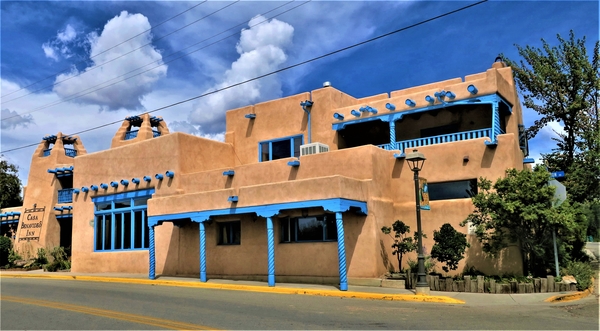
Houses, walls and other structures sport rounded corners, curves and bends that replicate nature. I call it architecture with natural character.
The Taos Plaza continues to serve as the core of the municipality and is the logical place to begin an exploration. It’s inhabited by buildings that combine the town’s frontier past with attractions which now serve as a magnet for many more visitors than those who make it and surrounding neighborhoods their home.
Taos, New Mexico is a World-Class Art Center
Painters and other creative types were attracted to the area by its lovely landscapes, radiant light and the blending of Native American and Hispanic cultures. Many of them settled in in Taos.
Four rooms in the Ernest L. Blumenschein Home and Museum formed part of the defensive walls that surrounded the original settlement. Later they were incorporated into a home where the artist, and his painter wife, lived and worked during the first decades of the 20th century.
In addition to paintings by its former occupants, the collection includes works by the Taos Society of Artists. In the early 20th century, members of that group earned the town world-wide recognition as a major art colony.
Works by Taos Society members also hang in the Taos Art Museum at Fechin House, which is named for the Russian émigré who came to town in 1927 and evolved into a leading portraitist.
He also became well-known for another talent. Fechin used carving and carpentry skills that he had learned as a child to hand-fashion intricately designed ceiling beams, doors, furniture and even radiator covers.
Other museums, some located in homes of former residents, also relate chapters of the intriguing history of Taos. The Harwood Museum displays works by outstanding 18th-to-21st century painters. The Couse-Sharp Historic Site is named for two painters who worked there and were original members of the Taos Society of Artists.
The story of the Millicent Rogers Museum involves the high-society scion of a wealthy industrialist who came to Taos to recover from a failed romantic affair with Hollywood movie actor Clark Gable. Her collection includes textiles, pottery and other arts and crafts endemic to the area.
Shop ‘Til You Drop in Taos, New Mexico
Along with its claim to fame as a center for a fascinating fusion of artistic genres, Taos is a shopping Mecca. The challenge becomes how to narrow down an overwhelming selection of cowboy and cowgirl paraphernalia, Native American items and a long list of other goods.
As if that weren’t enough shoppers’ overload, some museum stores also offer unusual and often unique merchandise. For example, in keeping with the nationality of Nicolai Fechin, Russian art and crafts share shelf space with local offerings in his former home. A museum-quality collection of Native American art and handicrafts echoes that which is exhibited in the Millicent Rogers Museum.
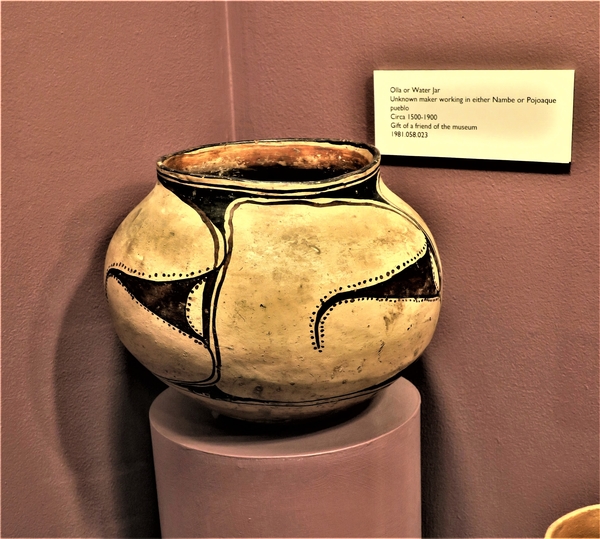
Native American Culture is Alive in Taos, New Mexico
A very different shopping, and cultural, experience greets visitors to the Taos Pueblo. That historical monument is one of 19 pueblos (Spanish for towns or villages) dotted around northern New Mexico. The complex of multi-storied earthen structures is considered to be the oldest continuously inhabited place in the country, and life there goes on much as it has for some 2,000 years.
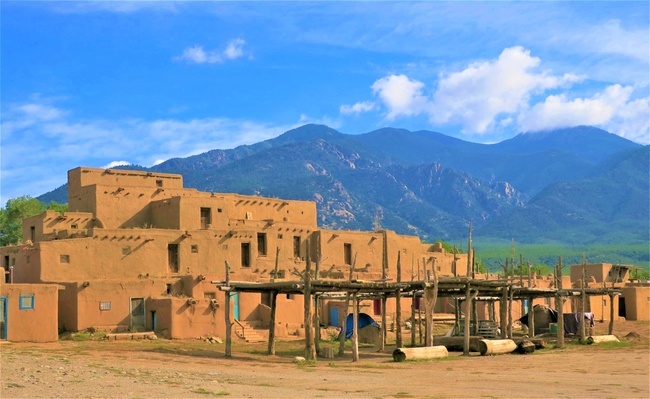
While many of the pueblo’s residents live in modern dwellings scattered about the expanse, about 150 of them continue to cling to the old ways in the original apartments. They make do without electricity or running water, and bake bread in outdoor beehive shaped ovens called hornos (pronounced ornos).
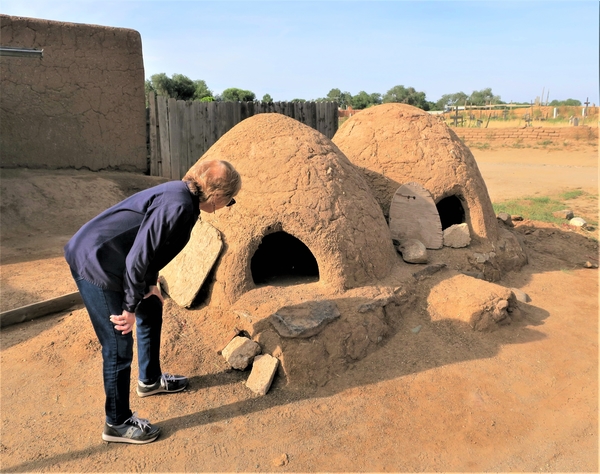
Some rooms of ground-floor apartments function as shops selling handmade jewelry and paintings by Native American artists. A better deal, I decided, was paying $4 for a snack of fry bread, cooked to order and served with a choice of powdered sugar, cinnamon or honey. The chef was a charming 10-year-old girl working under the supervision of her grandfather.
Another pleasant encounter was my chat with a teenage boy who proudly displayed a row of arm tattoos of famous Native American chiefs. Pointing to the face at the top, he identified the image as Sitting Bull, a renowned leader who led his people during years of resistance to the United States government.
Below-the-Radar Sites in Taos, New Mexico
Along with this and other major sites, I came across several that may lie beneath some visitors’ radar yet which I deem well worth a look. The little Bent House Museum was where the first American governor of New Mexico lived, and died in 1847 when he was scalped during a Native American uprising. The house contains original furnishings, and a hole dug in the wall through which some of its inhabitants escaped is still visible.
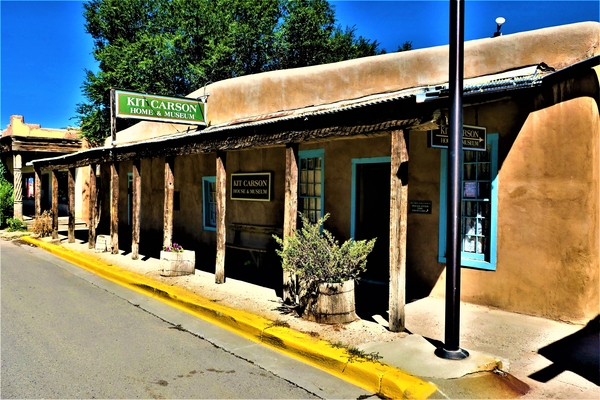
Kit Carson was a multitasking frontiersman, trapper, scout, Indian Agent and Army officer who became a legend due to stories about him that were published in news articles and dime novels. The low-slung adobe house where he lived for almost a quarter-century is a repository of artifacts that illustrate the various phases and accomplishments of his career, and of life as it was when Taos was a frontier town.
That home, and its former occupant, typify the captivating tales, historical tidbits and cultural mélange that draw visitors to Taos. Over time, those attractions convinced a cross-section of them to stay and add yet another chapter to the scintillating story of that inviting destination.
If you go. For more information about Taos, log onto www.taos.org
Authors: Fyllis Hockman and Victor Block are a husband-wife team of experienced travel journalists who have gallivanted throughout the United States, and to nearly 80 countries around the world, and written about what they have seen, done and learned. Their articles have appeared in newspapers across the country and on websites across the Internet, and they each have won numerous writing awards. They love to explore new destinations and cultures and uncover off-the-beaten-path attractions. Read more of their work at The Rambling Writers
- Broward County, Florida: When the Winter Sun Hides Behind a Cloud - April 16, 2024
- Nature is Neat in Broward County, Florida - April 1, 2024
- Margaritaville: A Time-Honored Memorial to Jimmy Buffett - March 15, 2024
